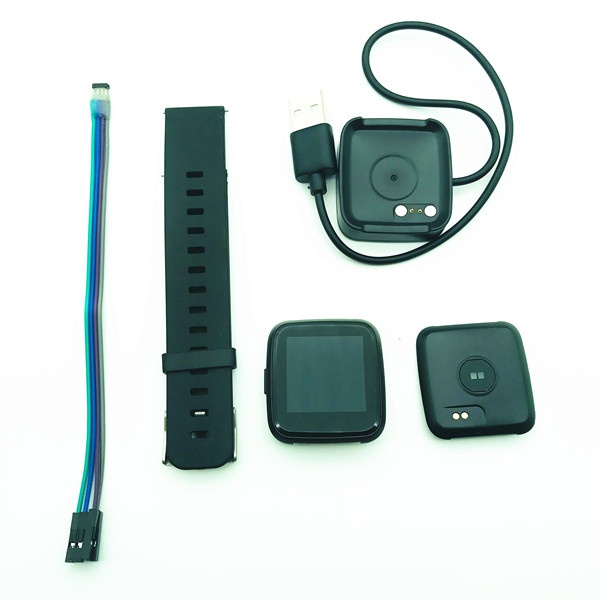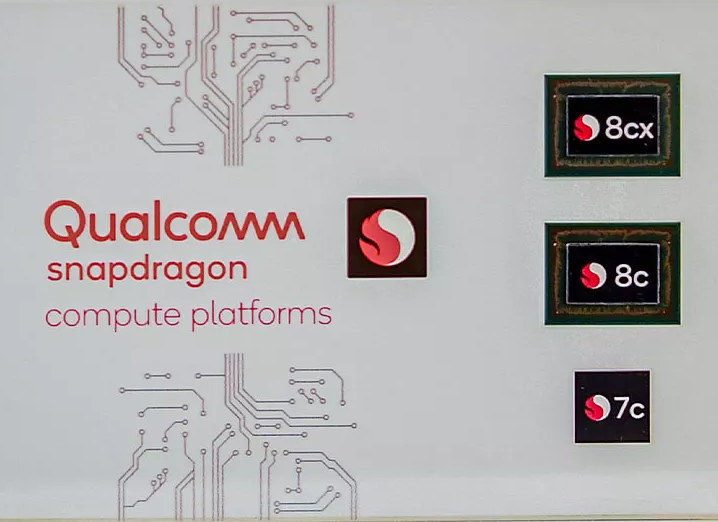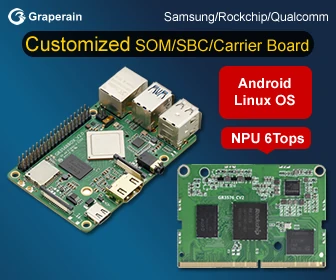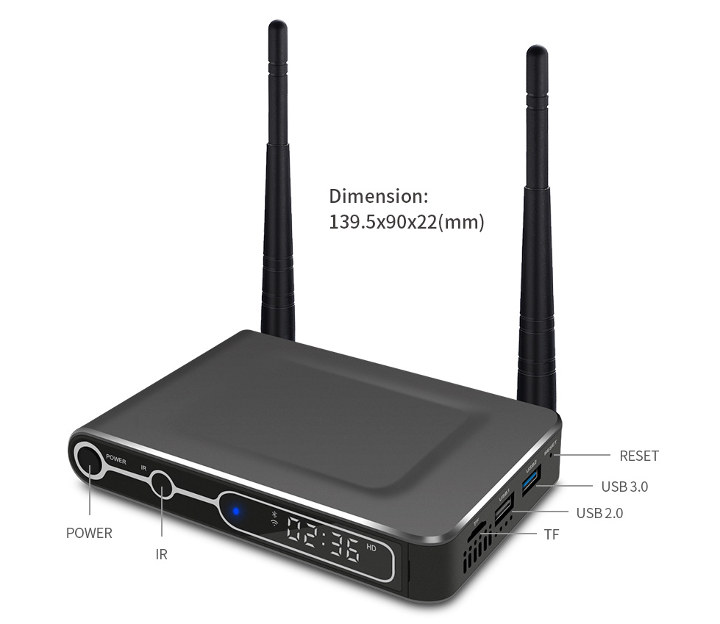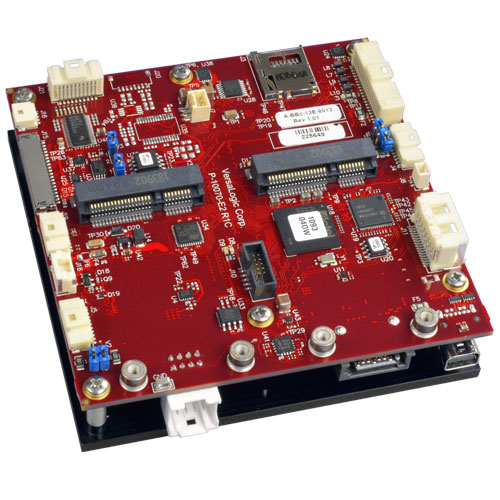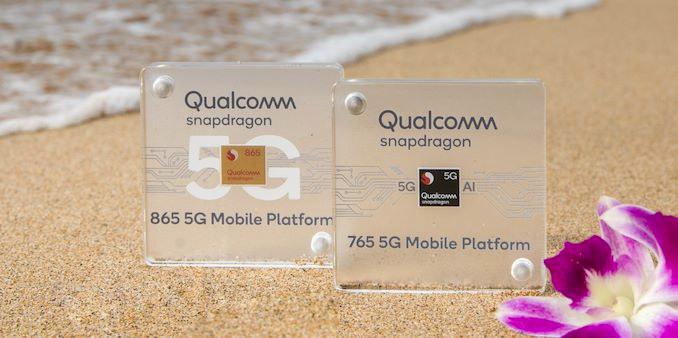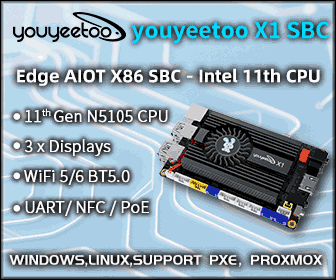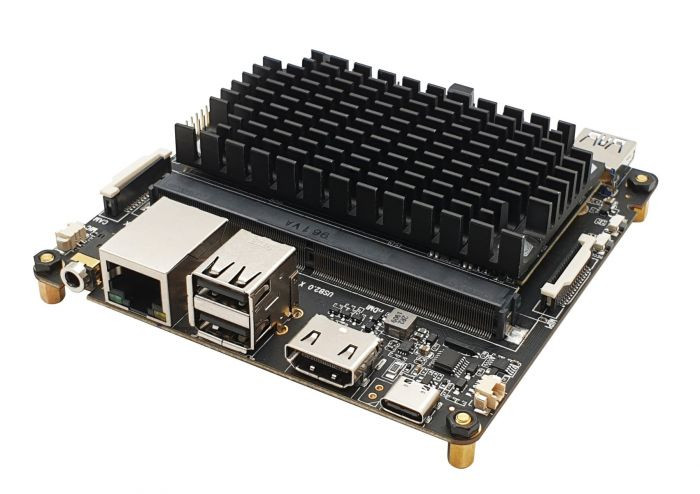PineTime was announced as a $25 smartwatch & companion for PinePhone Linux smartphone which itself sells for $150. PineTime specifications are still not frozen, but we do know it will be based on Nordic Semi nRF52832 or nRF52840 wireless SoC, come with a 1.3″ 240×240 capacitive touch display, and support a variety of operating systems such as ZephyrOS, FreeRTOS, Arm Mbed or NuttX depending on community involvement. So far it was not available for purchase, but in Pine64’s December update about their various projects, Lukasz Erecinski announced the PineTime dev kit is now available for pre-order for $24.99. PineTime Dev Kit specifications: WiSoC – Nordic Semiconductor nRF52832 ARM Cortex-M4F @ 64 MHz with 512KB Flash, 64KB RAM, Bluetooth 5.0 LE connectivity Storage – 4 MB SPI NOR Flash Display – 1.3″ 240×240 IPS capacitive touchscreen with 65K colors Sensors – Accelerometer, PPG Heart Rate Sensor Actuator – Vibrator Battery Built-in […]
Qualcomm Snapdragon 7c & 8c Processors Target Entry-Level & Mainstream Mobile PCs
Nearly exactly one year ago, Qualcomm announced the Snapdragon 8cx processor for always-on always-connected PCs, and lateron Qualcomm and UL released PCMark 10 benchmark results showing Snapdragon 8cx had similar performance to a 15W Intel Core i5-8250U Kaby Lake-R processor, but with much better efficiency. The price of such laptops is still fairly high with Samsung Galaxy Book S announced in August for $1,000, and possibly canceled at this stage. Microsoft SQ1 powered Surface Pro X tablet is the only system based on Qualcomm Arm technology (customized version of Snapdragon 8cx) available now, and also sells for $1,000 and up. Qualcomm has now unveiled Snapdragon 7c and 8c arm processor to address the entry-level and mainstream markets of connected mobile PCs. Qualcomm Snapdragon 7c Specifications: CPU – Octa-core Kryo 468 processor @ up to 2.45 GHz GPU – Qualcomm Adreno 618 GPU DSP – Qualcomm Hexagon 692 DSP with Hexagon […]
Rikomagic MK25 Amlogic S922X TV Box Supports Digital Signage Features
Here’s another Amlogic S922X TV box. Rikomagic MK25 TV box & digital signage player comes with up to 4GB RAM and 32GB storage, HDMI 2.0 output, Gigabit Ethernet, and dual-band WiFi 5. Rikomagic MK25 specifications: SoC – Amlogic S922X hexa-core big.LITTLE processor with 4x Arm Cortex A73 cores @ up to 2.0 GHz, 2x Arm Cortex A53 cores, Arm Mali-G52MP6 (6EE) GPU; 12nm manufacturing process System Memory & Storage Configurations 2GB LPDDR4 RAM + 16GB eMMC flash, microSD card slot up to 32GB 4GB LPDDR4 RAM + 32GB eMMC flash, microSD card slot up to 32GB Video Output – HDMI 2.0 up to 4K @ 60 Hz, 3.5mm AV port (composite) Video – AVE-10 engine with 4K UHD H.265/VP9/AVS2 video decoding up to 60 fps, Dolby Vision, Advanced HDR10, HDR10+, HLG, and PRIME HDR high-dynamic range support Audio – Optical S/PDIF, digital audio via HDMI, stereo analog audio via 3.5mm […]
Marlin 2.0 Open Source 3D Printer Firmware Finally Released
Back in June, we wrote about Marlin 2.0 firmware supporting ESP32 3D printer board, but at the time the firmware was still in RC1 (Release Candidate) phase. I was informed Marlin 2.0 firmware had been in beta for several years now, but the good news is that Marlin 2.0.0 open-source 3D printer firmware has now been officially released. Some of Marlin 2.0.0 new features include: 32-bit support with several boards including Arduino DUE (SAM3X8E), Adafruit Grand Central (SAM5D), Smoothie / SBASE / EZBoard based on NXP LPC176x, SKR Mini powered by STM32, as well as ESP32 boards Some improvements were made to some AVR boards including Melzi (ATmega 1280), RAMPS (ATmega 2560), and RAMBo / miniRAMBo / Einsy RAMBo boards PlatformIO build environments for supported boards VSCode “Auto Build Marlin” extension for one-click build Power-Loss Recovery for SD print jobs Magnetic Parking Extruder support Magnetic Switching Toolhead and Toolchanger support […]
Versalogic Owl Small Form Factor Apollo Lake Embedded Computer Targets Military & Industrial Applications
VersaLogic Owl VL-EPU-4012 Embedded System Computer In October 2019 we reported on the VersaLogic Harrier computer that was slightly bigger than a credit card. Just announced by the company is a new embedded computer system is being developed, the Owl. Basics of the VersaLogic Owl The intended uses are again industry and military-grade applications. The system uses ECC memory and the Embedded Processing Unit (EPU) format. The processing unit is an Intel Atom E39xx Platform, 5th Gen Apollo Lake processor with dual or quad-core options. Strength and Resilience The ECC memory is fixed to the board and can be up to 8 GB in size. This reduces the damage that can be caused by vibration and shock, making the system tough and resilient. Available Ports and Security Hardware-based security is through a TDM 2.0 chip. There are onboard power conditioning, mini-PCIe expansion sockets, analog inputs, standard USB 3.0 and 4x […]
Qualcomm Unveils Snapdragon 865, 765, and 765G 5G Mobile Platforms
Qualcomm Snapdragon Tech Summit 2019 is taking place in Maui, Hawaii, US on December 3-5, and the company announced three 5G mobile platforms at the event: Snapdragon 865 with Qualcomm Kryo 585 CPU, Adreno 650 GPU, and external Snapdragon X55 5G modem up to 7.5 Gbps download Snapdragon 765 with Qualcomm Kryo 475 CPU, Adreno 620 GPU, and external Snapdragon X52 5G modem up to 3.75 Gbps download Snapdragon 765G where G stands for Gaming and the SoC comes with a speed-binned Qualcomm Kryo 475 CPU, while the Qualcomm Adreno 620 GPU provides 10% faster graphics rendering compared to the standard Snapdragon 765. Snapdragon 865 5G Mobile Platform SM8250 specifications provided by Qualcomm: CPU – Octa-core Kryo 585 up to 2.84 GHz GPU – Adreno 650 GPU with support for Vulkan 1.1 API, OpenGL ES 3.2, OpenGL 2.0 FP, 10-bit HDR gaming, hardware-accelerated H.265, and VP9 decoder DSP – Hexagon […]
Desklab Ultrathin, Lightweight 15.6″ 4K Portable Touchscreen Display Comes HDMI, USB-C, Stereo Speakers (Crowdfunding)
We’ve already seen a fair amount of portable displays launched in recent years which are often supposed to be brought along with your laptop or smartphone, including DUO add-on display, TAIHE Gemini 15.6″ FullHD/4K display, and the low-cost BlitzWolf BW-PCM1 11.6″ display among many others. Another option is Desklab 15.6″ portable display available either in Full HD or 4K resolution and which comes with stereo speakers in a similar fashion to the TAIHE model but with different ports, and no battery. Desklab key features and specifications: Display 15.6″ IPS touchscreen display with FullHD (1920×1080) or 4K (3840×2160) resolution 10ms response time 400 cd/m2 luminance 183° viewing angles Ports mini HDMI input 2x USB typ-C ports 3.5mm audio jack Micro USB port Audio – Stereo speakers Misc – Power button, volume rocker Battery – None, used the host battery Thickness – ~0.6 cm Weight – 595 grams Since the display comes […]
ROCK PI N10 RK3399Pro SBC Sells for $99 and up
Rockchip RK3399Pro processor is based on the popular Rockchip RK3399Pro hexa-core Arm Cortex-A72/A53 processor plus an embedded neural processing unit (NPU) delivering up to 3 TOPS for AI acceleration. So far you had to spend over $200 to get either Toybrick RK3399Pro board or 96Boards RK3399Pro development kit to get started with the processor. Some other companies announced their own RK3399Pro SBC such as Pine64 RockPro64-AI, or Khadas Edge board, but those are not available yet. But there’s now a more affordable Rockchip RK3399Pro SBC courtesy of Radxa’s Rock Pi N10 available on Seeed Studio in three variants: $99 model A with 4GB RAM (3GB for CPU/GPU + 1GB for NPU), 16GB eMMC flash $129 model B with 6GB RAM (4GB for CPU/GPU + 2GB for NPU), 32GB eMMC flash $169 model C with 8GB RAM (4GB for CPU/GPU + 4GB for NPU), 64GB eMMC flash Rock Pi N10 specifications: […]


